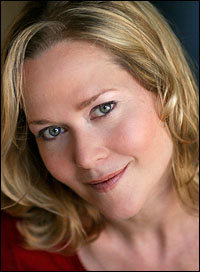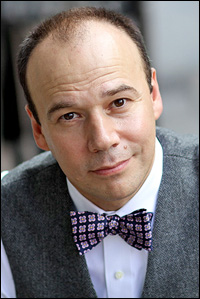
*
Sweet Little Devil [PS Classics]
I periodically sit down and play through my stack of obscure Gershwin sheet music, which includes the seven published songs from Sweet Little Devil (some of which were published under the pre-Broadway title, A Perfect Lady). So I have more than passing familiarity with the score from the long-forgotten musical which began the most important year in George's professional life. Most important by far, was 1924. On Valentine's Day — three weeks after Sweet Little Devil opened — he played piano at the premiere of a concert piece he wrote during the stretch between the Boston and New York openings, "Rhapsody in Blue." Which almost instantly catapulted him to a fame. In June he wrote the last of his scores for George White's Scandals, which for five editions had brought forth what was for the most part hackwork-on-assignment. The 1924 edition did contain the second of the two good songs (out of 30 published titles) that Gershwin wrote for White, "Somebody Loves Me."
Gershwin spent that summer in London, where he wrote his first West End musical comedy, Primrose, a moderate hit which never jumped the Atlantic. After which he embarked on what would be the first major musical of his career, in part because of three major factors. Most important was the decision to cease wandering from lyricist to lyricist and settle on one, his elder brother. (Ira had been gathering Broadway experience under a pseudonym, so as not to infringe upon George's growing prominence.) The second was to tie his fortunes to a pair of young-and-eager producers with a taste for bright, dancing musical comedies named Alex Aarons and Vinton Freedley. The immediate success of Al and Vin's Gershwin musicals enabled them, within three years, to build their own theatre, the Alvin. Which remains a prime house today, even though a later landlord changed the name to the Neil Simon.
The third key to the success of Lady Be Good, which opened December 1 of that same 1924, was in the choice of stars. George was already friendly with Fred Astaire and sister Adele (who was the charismatic one). The Astaires and the Gershwins were a perfect match. They would work together on one additional Broadway musical plus the smashingly successful London transfers of both shows. After Adele retired, Fred moved to Hollywood — where George and Ira wrote five immortal standards for him to sing in the movies (including "They Can't Take That Away from Me" and "Nice Work If You Can Get It").
| |
 |
|
| Rebecca Luker |
All of which is to say that I never thought much about Sweet Little Devil; I never anticipated someone digging it up, putting it back together, and recording it; and I certainly didn't expect that it would turn out sounding so delightfully good.
But here we are in 2012, eighty-eight years later, and here we have the first-ever recording of <i>Sweet Little Devil</i>. Tommy Krasker, presently of PS Classics but formerly archivist for the Ira Gershwin Estate, came across the materials back in the late '80s. He was involved with most of the studio recordings of Gershwin musicals over the years, all the while keeping Sweet Little Devil in mind. This spring, Krasker and partner Philip Chaffin — in the midst of its the recent revivals of Follies, Porgy and Bess, and the soon-to-arrive Encores! Merrily We Roll Along — finally decided the time had come to gamble on this delicious slice of early Gershwin.
The lyrics, rather, are by B. G. DeSylva. Three years older than George, "Buddy" by this point had a handful of songhits to his credit (including Jolson songs "California, Here I Come" and "April Showers," plus the immortal Kern ballad "Look for the Silver Lining"). The lyrics for Sweet Little Devil, it turns out, are quick and clever, closer in style to Larry Hart (who was just then a year from his first hit) than Ira. But the music, as always with George, is the thing. No songhits here, or anything resembling the sort of tune Gershwin was turning out with regularity almost immediately thereafter. But this is a bright and friendly score filled with distinct if minor delights. "The Jijibo" is the big dance tune, with a raggy beat. They play refrain after refrain, and it does leave the thing imprinted on your memory. ("Everybody ought to know — the Jijibo" says DeSylva, who had considerably more success with the dance song "Black Bottom," written with his post-George collaborators Lew Brown and Ray Henderson for the 1926 edition of the Scandals). "Hey! Hey! Let 'er Go!" is another dance-happy tune, despite a less-than-helpful lyric.
| |
 |
|
| Danny Burstein |
PS Classics has provided a customarily classy production. Sam Davis conducts from the piano, with David Loud providing vocal arrangements. The seven principals are accomplished and well chosen, although I find myself singling out those Broadway favorites Rebecca Luker and Danny Burstein. They are joined by Sara Jean Ford, Philip Chaffin, Jason Graae, Bethe Austin and Sally Wilfert.
All in all, a very sweet Sweet Little Devil.
| |
 |
|
| Cover art for "Double Exposure" |
My musical highlight of May, along with a revisit to Broadway's 2012 Best Musical Tony nominee Once (the cast album of which I addressed in a March On the Record column), was the just-ended appearance of The John Pizzarelli Quartet at Cafe Carlyle. John Pizzarelli is always wonderful, whether alone or in tandem with that supremely talented singer Jessica Molaskey (who on opening night was at ringside, kibitzing). This time, though, he seemed better than ever. The music was as good as always, but he seems to have gotten funnier; instead of charming us with all those awkward bad jokes, he is now telling awkward good jokes. Adding to the enjoyment was John's special guest, Bucky, AKA Dad. Bucky looked and acted like he was 86, which he is. Except when he was playing his guitar, when the years slipped away. John's sidemen were as good as ever, brother Martin on the bass, Larry Fuller on the piano, and Tony Tedesco on the drums (with a remarkable solo on "Sing, Sing, Sing" during the finale).
Pizzarelli took several opportunities to plug his latest CD, "Double Exposure," and given the excellence of his act I immediately took the hint. The double exposure is pop and jazz; that is, he takes pop songs of his youth — the late '60s, the '70s — and "exposes" them to the jazz that permeated his home (courtesy of Bucky). Thus we get songs by Lennon & McCartney, James Taylor, Billy Joel, Joni Mitchell and others, all in Pizzarelli jazz-style. There is also a new song — "Take a Lot of Pictures," inspired by an expression Sinatra used to use when he was annoyed — written by John and Jessica. Jessica also duets and provides special lyrics for Taylor's "Traffic Jam," and they are pretty special. As is Pizzarelli, and as is "Double Exposure."
(Steven Suskin is author of "Show Tunes" as well as "The Sound of Broadway Music: A Book of Orchestrators and Orchestrations," "Second Act Trouble," the "Broadway Yearbook" series and the "Opening Night on Broadway" books. He also pens Playbill.com's Book Shelf and DVD Shelf columns. He can be reached at [email protected].)










